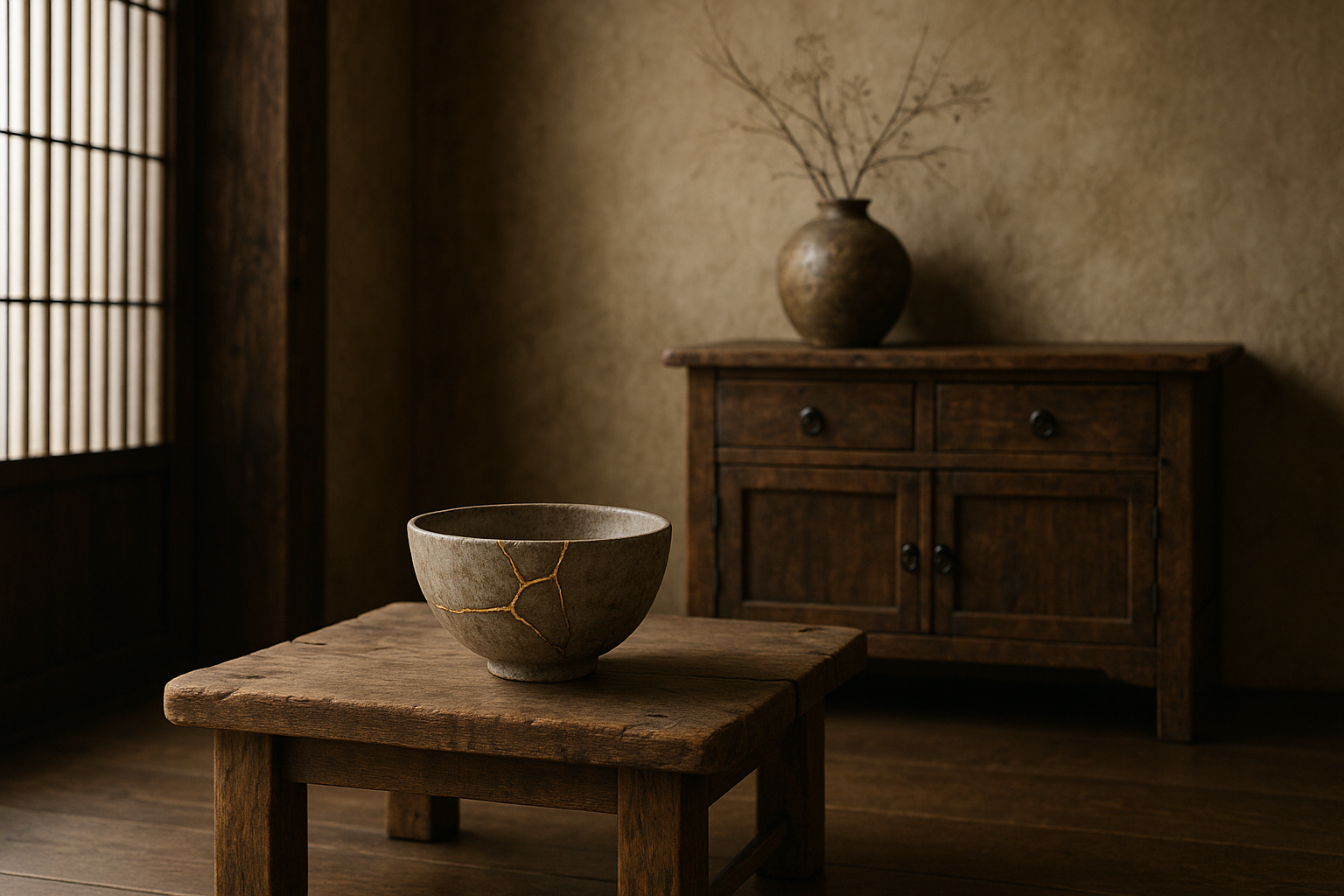Rediscovering Wabi-Sabi: The Art of Imperfection in Home Design
Imperfections make us human, and there's a unique beauty in the flawed and the incomplete. This is the essence of Wabi-Sabi, a Japanese aesthetic philosophy that is gaining traction in modern-day home design. It encourages us to embrace imperfection in our living spaces, creating homes that are deeply personal and authentic.

Wabi-Sabi: A Historical Perspective
The concept of Wabi-Sabi originated in Japan during the 15th century, deeply rooted in the Zen Buddhism teachings about mindfulness, simplicity, and the transient nature of life. It was initially associated with the tea ceremony, where handmade, irregularly shaped tea bowls were preferred over perfectly symmetrical ones. This aesthetic gradually moved beyond tea ceremonies, permeating different areas of Japanese life, including home design.
Wabi-Sabi in Modern-Day Home Design
Today, Wabi-Sabi’s philosophy resonates with homeowners seeking simplicity and authenticity. Instead of chasing after the latest trends or striving for picture-perfect interiors, Wabi-Sabi encourages a more mindful, organic approach to home design. It embraces the natural aging and weathering of materials, appreciating the beauty of cracks in a wooden table, faded paint on a wall, or a well-worn antique rug.
Practicality and Market Trends
Wabi-Sabi is more than just an aesthetic; it’s a mindset that celebrates the natural, the rustic, and the handmade. This approach is practical as it eliminates the pressure to have a ‘perfect’ home, promoting a sense of contentment and wellbeing. Market trends indicate a growing appreciation for this aesthetic, with homeowners increasingly seeking out artisanal, handmade items and natural materials that exude Wabi-Sabi’s essence.
Wabi-Sabi and Daily Living
Embracing Wabi-Sabi at home involves appreciating the beauty of everyday objects and spaces. It’s about creating a home that tells your story, with all its imperfections and idiosyncrasies. This aesthetic encourages us to live more mindfully, appreciating the here and now, and finding beauty in the ordinary and the imperfect.
Conclusion
Wabi-Sabi offers a refreshing counterpoint to the relentless pursuit of perfection in home design. It encourages us to embrace the imperfections and the natural aging process of our homes, finding beauty in the weathered, the worn, and the handmade. As we rediscover this ancient aesthetic in our modern homes, we find a new way to create living spaces that are authentic, personal, and deeply meaningful.




